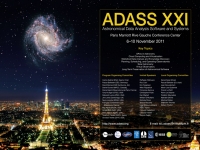David Grumm (Space Telescope Science Institute), Perry Greenfield (Space Telescope Science Institute)
Abstract
Cosmic rays are expected to be a primary concern of on-orbit JWST detectors as the on-orbit cosmic-ray environment does not benefit from shielding by the earth's magnetic field. Because the effect of a cosmic ray is to add a large and unpredictable number of counts to the signal, it is important to correctly flag cosmic rays to enable valid count rates to be calculated for science pixel data. Once the cosmic rays are identified, a fit can be performed for the data between adjacent cosmic ray-affected pixels, allowing the count rate for each pixel to be estimated. In lieu of having on-orbit data on which to test cosmic ray rejection algorithms and fitting algorithms, realistic datasets have been generated using a set of Python scripts that were written that include realistic celestial sources and cosmic rays. An investigation was made into ways of detecting cosmic rays, and then how to measure the underlying count rate signal in the presence of these jumps. As the on-orbit datasets will be large, techniques to reduce the processing time by reducing the memory requirements and reordering the data have been investigated. This process of cosmic ray rejection and ramp fitting will be incorporated into the JWST Calibration pipeline to reduce on-orbit data.
Paper ID: P052
Poster Instructions
|

